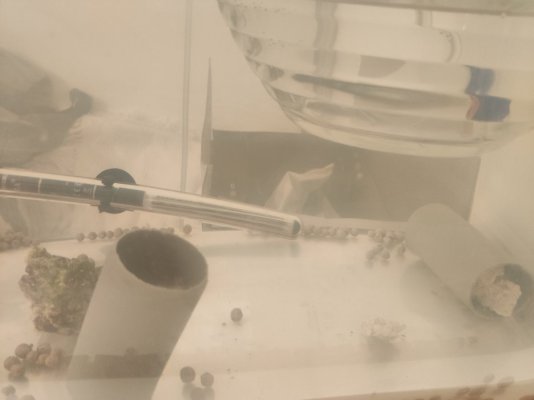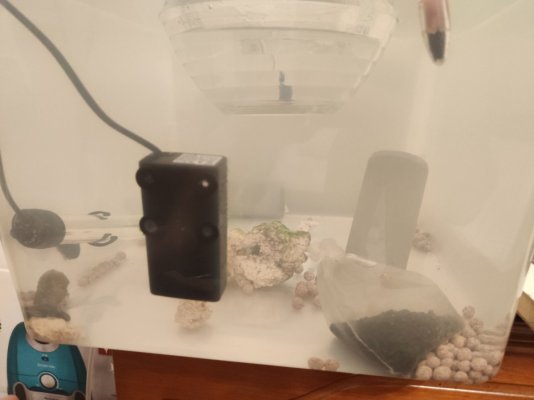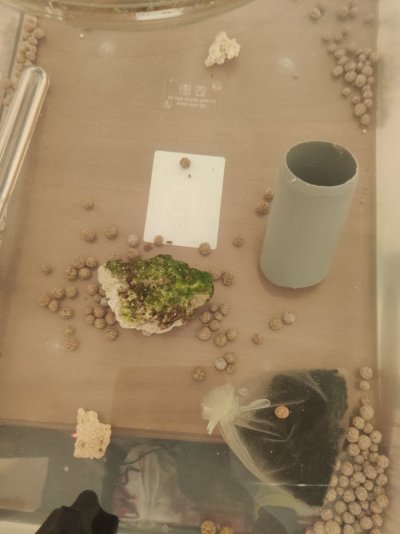- Joined
- Apr 20, 2019
- Messages
- 205
- Reaction score
- 68
Here are some photos again, as I stated earlier the fish was laying on the bottom on its side for at least 3-4 hours and was gasping for air. After putting it in the bowl with clean water it recovered within about 3 hours. The reef shop I bought it from said they had it for 2 months. The difference in the way it acts after moving it in clean water is extreme.that fish is tiny, low output rate of ammonia compared to a big wrasse etc
can we see the picture of the tank he was in when the burn happened/ties in the big picture view of the issue/and if anyone has meds they want to recommend it'll help them see if the burn was likely based in that specific setup. reddened gills alone can't prove it/flukes etc may mask it/but qt are the ones likely to see issues so that big picture is helpful in your fish diagnosis in my opinion.
The bag is carbon, there is some cycled media within the canister filter. There is also an air stone which currently is in the bowl for better oxygenation.






















